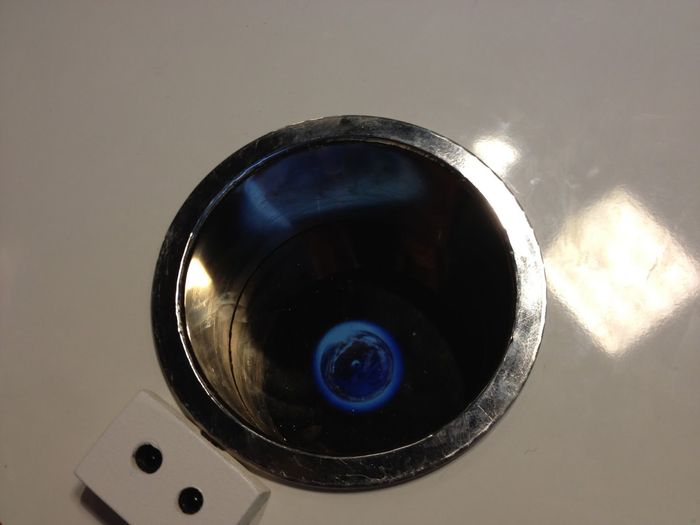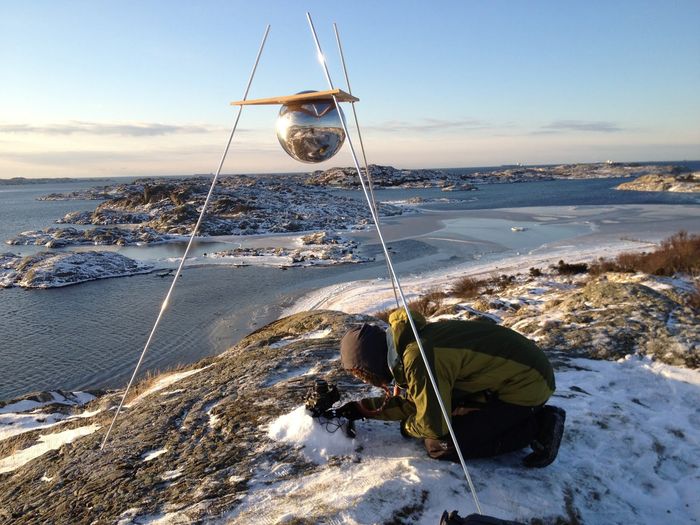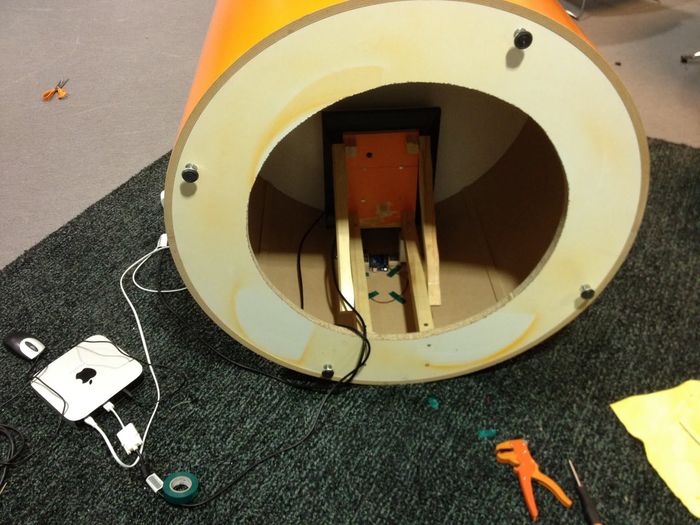Planet Uncertainty
This installation aims to communicate a fundamental physical concept, the uncertainty principle. It takes this concept and projects it from the quantum level of observations into our macroscopic world by letting the visitor discover a small world. Peeking into it, it shows him, that he will in fact not be able to see what he expects to see, because his act of observing will change this little world.

Our installation allows the visitor to discover a windor to a small strange hidden world. This world is not just a static representation, but it is reacting upon its observation and the observers behaviour. In fact, the idea consists in showing a short clip of a day time-cycle where it is possible to observe the planet fading in from the dark, being lighted by the sun rising in the sky and finally going back to darkness at the end of the day. The components of the observation are time and space where the first is represented by the day-night cycle and the second is the dimensional and physical characteristics of the object in itself as a static picture. Beside this, the temporal aspect will be enhanced by adding a rotation as a behavior of the planet.
The clip is shown as a projection on the bottom surface of a pen holder which was already built-in on a table placed into a coffee area. The users, by approaching the ordinary-looking table, will notice something projected into a common space which does not belong there. While he will be still far from the screen, the dimension of it will be too small to let him understand exactly what it is but the temporal sequence of the time cycle from dusk till dawn and its rotation movement will be clearly notable. Once the users will approach it in order to observe it closely, it will get bigger and the spatial aspects will become more clear while the temporal aspects will be modified by an exponential slowing down of the day-night cycle and of the planet's rotation.

For the realisation of this project we had to work simultaneously on two different tasks: the creation of the video footage and the construction of the displaying table. For the video footage we decided to build a tripod construction which holds a mirror sphere and a camera shooting pictures from below it. We installed it on the island styrsö on a small hill overlooking the surrounding sea. We took around 1000 pictures from 7 o’clock in the morning until 17 in the afternoon. The interval between the pictures was 30 seconds. Every few hours, we had to check if there were any problems with the camera or the sphere and to replace the battery. It was an exceptional cold day, and we were lucky that all the equipment worked without any problems.

We are planing to further develop this project and install it in various locations with different contents. We are thinking about installing it in hidden corners of our urban environment, like ventilation shafts, drain wholes, rainwater pipes or unused windows. Imagine wandering through the city during the night, and seeing a small gleam of light rising from a little whole in a dark corner. You bend done to see what it is coming from... and you will discover a miniature world. We also want to develop the interaction with these worlds further. Now, there is only a basic interaction with it, the observer does not effect remaining changes. The world gets back to its previous condition when the observer leaves. We could make changes to it that last longer and that could be noticed by other observers as well. This would add another interesting conceptual level.
This project was done in collaboration with Marco Dondana.
← Back